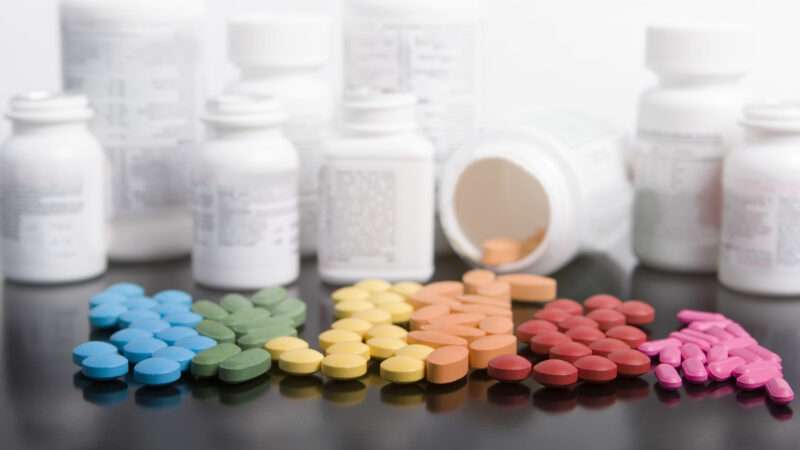
The Drug Enforcement Agency (DEA) is warning that drug cartels are making colorful "rainbow fentanyl" to appeal to kids.
"Brightly-colored fentanyl is being seized in multiple forms, including pills, powder, and blocks that resembles sidewalk chalk," cautions a DEA press release.
And yet there is no evidence—none whatsoever—that these pills are being peddled to the playground set.
"I'm skeptical that [dealers] would try to target children where there is not an existing market," says Sally Satel, an addiction psychiatrist and resident fellow at the American Enterprise Institute (AEI). What's more, young kids are a true loss leader, because without a "significant tolerance for opioids," the chances of overdosing are huge. "Few would survive and come back for more," adds Satel.
Which is not to say that the colors aren't possibly designed to make the pills more attractive in general. Heroin packets, for instance, come stamped with all kinds of edgy names and images.
"It's a way to brand your stuff," says Reilly Capps, who writes about drugs for The Washington Post and Rooster. According to Capps, people at raves will peddle different shapes and colors of ecstasy. Some pills are shaped like Mickey Mouse, some are branded "Tesla," and so on.
These undoubtedly appeal to a certain segment of the market. But that segment is not children.
Such nuance is often lost when the story hits the news cycle. While a long piece in CNN explicitly said "parents of young children should not overly panic," a WRAL piece cautioned that "we all know how easy it is for children to pass candy around to each other," as if rainbow fentanyl is as likely to be shared as M&Ms.
Many media outlets simply published the DEA press release without any independent reporting, notes Ryan Marino, a Case Western Reserve School of Medicine emergency room doctor with a specialization in addiction and toxicology. Colors have been added to drugs for years, he says. The real danger isn't that kids are being given fentanyl-like candy. It's that fentanyl is being pressed into the shape of other drugs, like oxycodone. People take a fentanyl pill thinking it is something else, and overdose.
But of course, it's the kiddie angle that's irresistible to the media, because it provides a huge rush of our culture's favorite drug: fear for our children. We just can't get enough of stranger danger.
This particular rush is leading to calls to throw more money at the DEA.
"[Senate Majority Leader] Chuck Schumer wanted $290 million more dollars because of this," says Capps. But that money could be spent on any number of life-enhancing, abuse-reducing initiatives, including harm-reduction programs.
Fentanyl is not just a deadly drug: It's a scourge upon the land. But candy-munching kids aren't the target, and scaring parents into thinking otherwise is a waste of the DEA's time.
The post No, That Isn't 'Rainbow Fentanyl' in Your Kid's Candy Stash appeared first on Reason.com.







